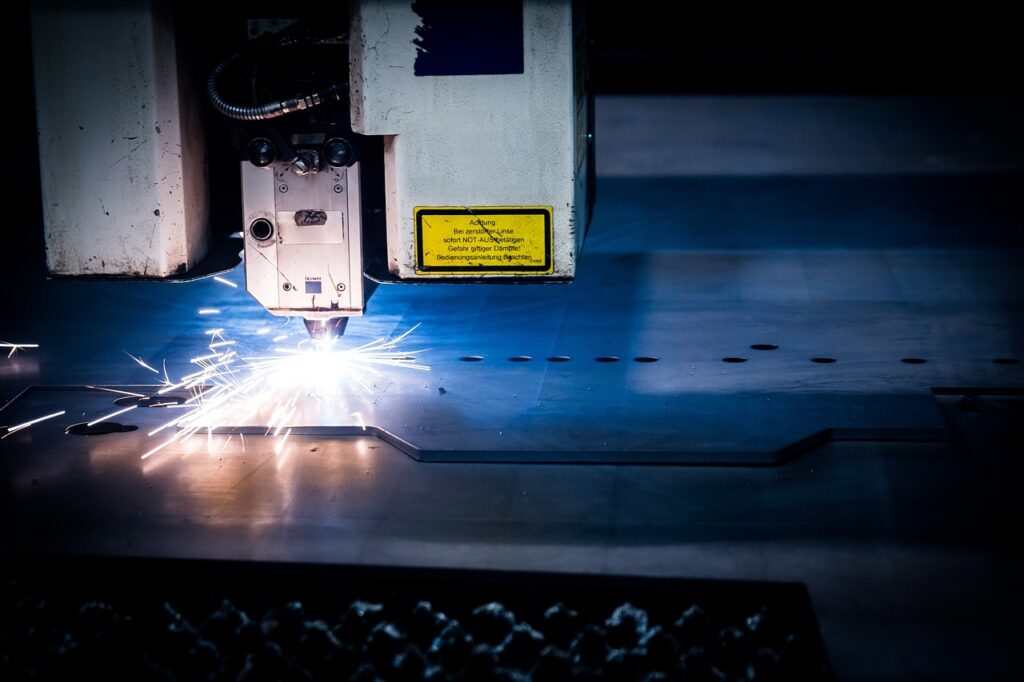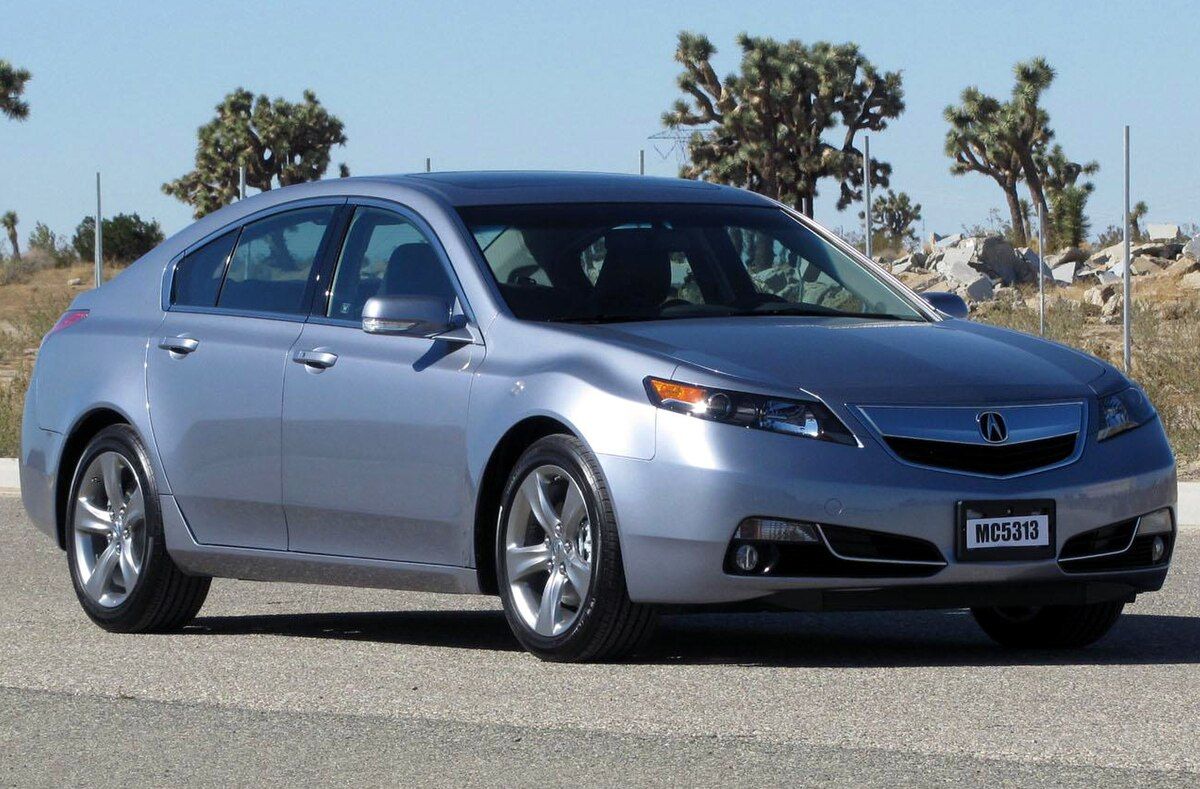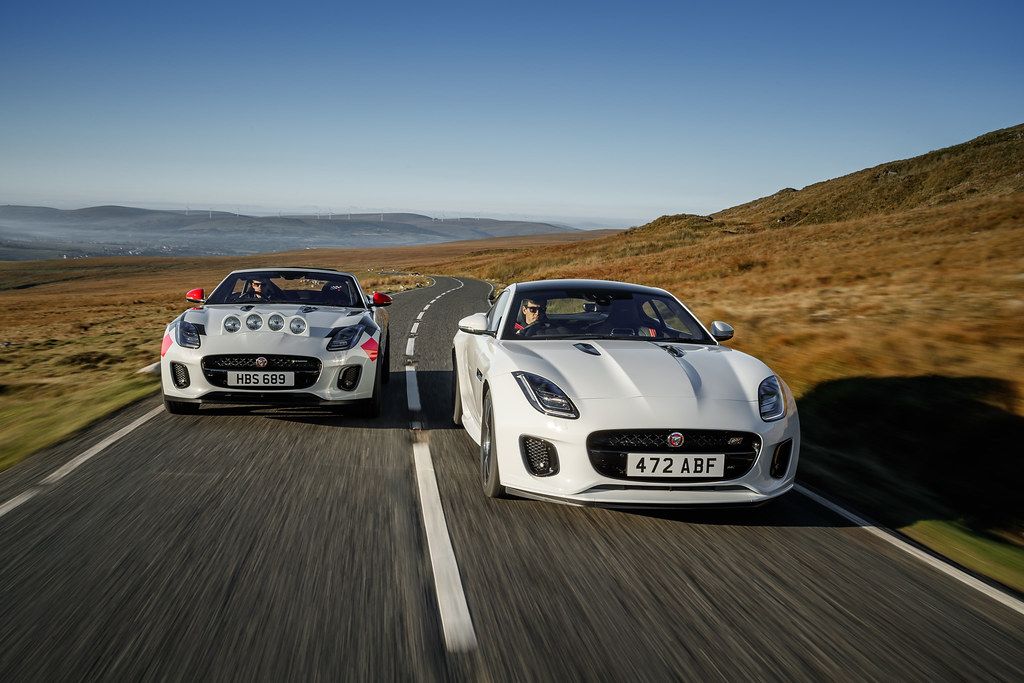
The automotive landscape is in constant flux, with seismic shifts redefining consumer preferences and manufacturing paradigms. In an era dominated by the seemingly insatiable demand for SUVs and trucks, the traditional sports car, a segment built on passion, performance, and an uncompromised driving experience, might appear to be an anomaly on the precipice of obsolescence. Indeed, sales figures suggest a shrinking market, leading many to ponder the fate of these exhilarating machines.
Yet, despite these headwinds, a vibrant current of enthusiasm persists, underscoring a profound truth: the sports car is more than just a mode of transport; it is a declaration of intent, a connection to the road, and an emotional touchstone for millions. From the visceral thrill of a perfectly executed corner to the resonant hum of a finely tuned engine, these vehicles tap into a primal desire for engagement that transcends mere utility. Their allure, though challenged, remains a powerful force in the automotive world.
This in-depth exploration will delve into the multifaceted reasons why sports cars, in their various forms, continue to hold a special place in the hearts of drivers and enthusiasts. We will examine the core tenets of their appeal, the iconic models that define the segment, and the significant economic and societal pressures that are reshaping their market. Join us as we uncover the enduring spirit of the sports car amidst an ever-changing automotive narrative.

1. **The Unrivaled Joy of Driving: The Miata’s Philosophy of Fun at the Limit**For many, the essence of a sports car is not about outright speed, but the sheer joy and accessibility of pushing a vehicle to its limits within safe, everyday driving conditions. Dave Coleman, an engineering manager for Mazda, eloquently articulates this philosophy through the lens of the Mazda MX-5 Miata. He champions the Miata as an “attainable way to enjoy your life,” emphasizing that much of daily driving can be undeniably “boring stuff.” The Miata, celebrating 35 years of existence, counters this mundane reality by offering a driving experience focused purely on fun.
Coleman highlights the Miata’s unique ability to be driven “at the limit without going so fast that you can’t see through the corner.” This capability is crucial, as it allows drivers to experience the car’s full dynamic range without resorting to track days or illegal speeds, making spirited driving a regular, accessible pleasure. Its reputation as one of the top sports cars is firmly rooted in its trifecta of affordability, lightness, and an undeniably “buoyant personality,” elements that combine to create an engaging and rewarding experience for its owner.
Furthermore, the Miata’s design and tuning underscore its practicality and versatility. Coleman himself takes his Miata to the airport, advocating for soft-sided luggage to maximize trunk space, which he assures is “bigger than you think.” He also confidently navigates California commuter traffic, even at 6’2″, proving that tall individuals can comfortably fit. The car’s “supple and soft” suspension is specifically “made for bumpy roads” and “tuned for backroads, not the track,” demonstrating its proficiency in real-world conditions rather than just idealized environments. This blend of approachable performance and everyday usability ensures that Miata owners can consistently “push the envelope with a sports car” in their daily lives, explaining why Mazda “sell as many as we build.”
Car Model Information: 2019 Volvo XC90 T6 Inscription
Name: Mazda MX-5
Manufacturer: Mazda
Aka: unbulleted indent list
Production: 1989–present
Assembly: Hiroshima
Class: Roadster (car),sports car
Layout: unbulleted indent list
Platform: List of Mazda model codes#Model codes
Categories: 1990s cars, 2000s cars, 2010s cars, 2020s cars, All Wikipedia articles in need of updating
Summary: The Mazda MX-5 is a lightweight two-seat sports car manufactured and marketed by Mazda. In Japan, it is marketed as the Mazda Roadster or, previously, as the Eunos Roadster. In the United States it is sold as the Mazda Miata (), and it was formerly marketed under the same name in Canada. The name miata derives from Old High German for “reward”.
Produced at Mazda’s Hiroshima plant, the MX-5 debuted in 1989 at the Chicago Auto Show. It was created under the design credo Jinba ittai, meaning “unity of horse and rider”. Noted for its small, light, balanced and minimalist design, the MX-5 has often been described as a successor to the 1950s and 1960s Italian and British roadsters, with the Lotus Elan serving as a design benchmark.
Each generation is identified by a two-letter code, beginning with the first generation NA. The second generation NB launched in 1998, followed by the third generation NC in 2005, and the fourth generation ND in 2015.
More than one million MX-5s have been sold, making it the best-selling two-seat convertible sports car in history.
Get more information about: Mazda MX-5
Buying a high-performing used car >>>
Brand: Mazda Model: MX-5 Miata
Price: $28,859 Mileage: 43,261 mi.
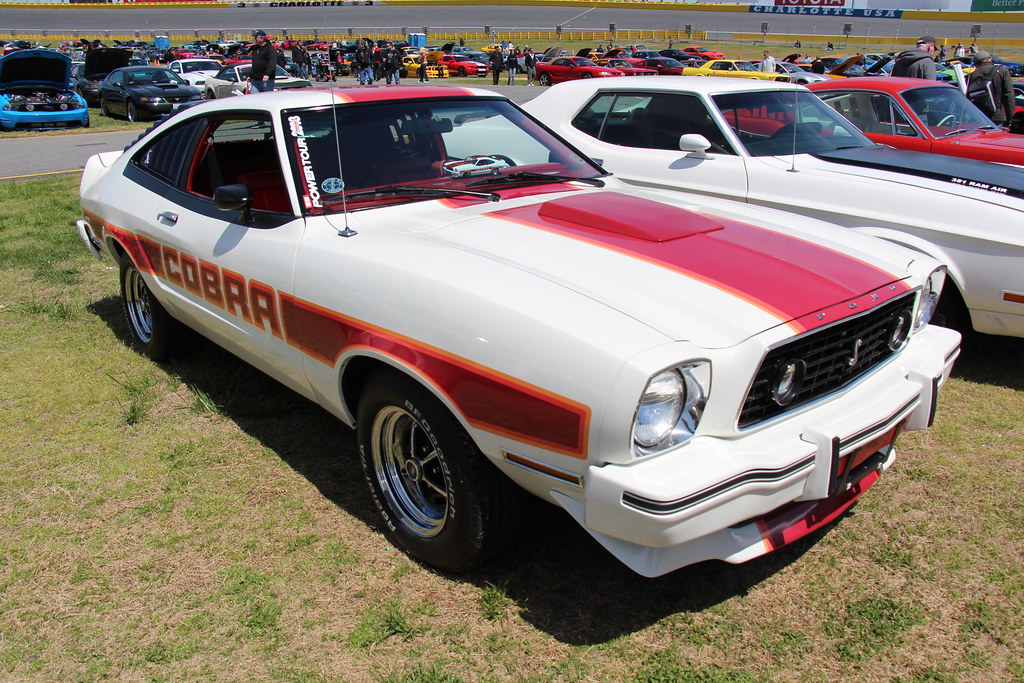
2. **Iconic Status and Brand Heritage: The Mustang’s Unwavering Legacy**The enduring popularity of sports cars is often intertwined with their iconic status and the rich heritage they carry within their respective brands. Few vehicles embody this more profoundly than the Ford Mustang. Joe Bellino, the Mustang brand manager, asserts the car’s “iconic” status, reassuring enthusiasts that the Mustang and its manual transmission are committed for the “long haul.” This unwavering commitment from Ford speaks volumes about the model’s significance beyond mere sales figures.
The Mustang’s market performance is a testament to its sustained appeal. In May, it dominated the U.S. sports car segment, accounting for a staggering 62% of sales. Bellino anticipates further boosts during the summer months, noting strong interest, particularly from women for the track-focused Mustang Dark Horse. This broad appeal across different demographics highlights the car’s ability to transcend traditional enthusiast stereotypes, attracting a diverse range of buyers who appreciate its blend of performance and style.
Moreover, the Mustang of today has evolved far beyond its muscle car roots to offer a comprehensive, uncompromised driving experience. Bellino, who drove one daily after college, confirms that modern Mustangs boast more than just good looks and performance. Buyers can expect a host of sophisticated features, including a “big infotainment screen, limited slip differentials, heated seats, ventilated seats, heated steering wheel, plenty of truck space and adjustable drive modes,” alongside standard Co-Pilot360 technology. This integration of luxury and advanced safety features ensures that buyers are “not losing anything” and “not sacrificing with a sports car,” effectively blending the thrill of performance with the comforts and conveniences expected in a contemporary vehicle.
Car Model Information: 2024 Ford Mustang GT
Name: Ford Mustang
Caption: 2024 Ford Mustang GT Convertible
Aka: Ford T5 (Germany)
Manufacturer: Ford Motor Company
Production: March 1964 – present
ModelYears: 1965–present
Class: Unbulleted list
BodyStyle: Unbulleted list
Layout: Front-engine, rear-wheel-drive layout
Categories: 1970s cars, 1980s cars, 1990s cars, 2+2 coupés, 2000s cars
Summary: The Ford Mustang is an American automobile manufactured and marketed by Ford since 1964, as Ford’s longest nameplate in continuous production. Currently in its seventh generation, it is the fifth-best selling Ford car nameplate. The namesake of the “pony car” automobile segment, the Mustang was developed as a highly styled line of sporty coupes and convertibles derived from existing model lines, initially distinguished by its pronounced “long hood, short deck” proportions.
Originally predicted to sell 100,000 vehicles yearly, the 1965 Mustang became the most successful vehicle launch since the 1927 Model A. Introduced on April 17, 1964 (16 days after the Plymouth Barracuda), over 400,000 units were sold in its first year; the one-millionth Mustang was sold within two years of its launch. In August 2018, Ford produced the 10-millionth Mustang; matching the first 1965 Mustang, the vehicle was a 2019 Wimbledon White convertible with a V8 engine.
The success of the Mustang launch led to multiple competitors from other American manufacturers, including the Chevrolet Camaro and Pontiac Firebird (1967), AMC Javelin (1968), and Dodge Challenger (1970). It also competed with the Plymouth Barracuda, which was launched around the same time. The Mustang also had an effect on designs of coupes worldwide, leading to the marketing of the Toyota Celica and Ford Capri in the United States (the latter, by Lincoln-Mercury). The Mercury Cougar was launched in 1967 as a unique-bodied higher-trim alternative to the Mustang; during the 1970s, it included more features and was marketed as a personal luxury car.
From 1965 until 2004, the Mustang shared chassis commonality with other Ford model lines, staying rear-wheel-drive throughout its production. From 1965 to 1973, the Mustang was derived from the 1960 Ford Falcon compact. From 1974 until 1978, the Mustang (denoted Mustang II) was a longer-wheelbase version of the Ford Pinto. From 1979 until 2004, the Mustang shared its Fox platform chassis with 14 other Ford vehicles (becoming the final one to use the Fox architecture). Since 2005, Ford has produced two generations of the Mustang, each using a distinct platform unique to the model line.
Through its production, multiple nameplates have been associated with the Ford Mustang series, including GT, Mach 1, Boss 302/429, Cobra (separate from Shelby Cobra), and Bullitt, along with “5.0” fender badging (denoting 4.9 L OHV or 5.0 L DOHC V8 engines).
Get more information about: Ford Mustang
Buying a high-performing used car >>>
Brand: Ford Model: Mustang
Price: $38,965 Mileage: 13,465 mi.
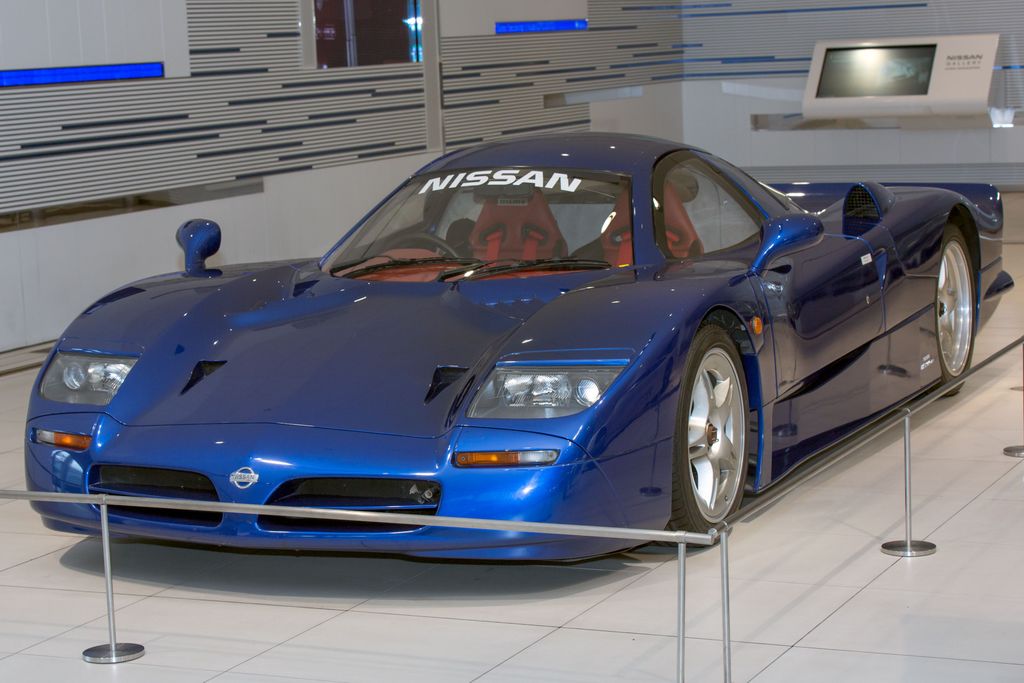
3. **Performance Value Proposition: Nissan Z Offering Compelling Power for the Price**In a market where high-performance vehicles often command exorbitant prices, the concept of a strong performance value proposition becomes a critical factor in a sports car’s enduring appeal. Nissan’s Z series perfectly exemplifies this, offering enthusiasts a potent blend of power and driving engagement at a remarkably accessible price point. Vinay Shahani, senior vice president of U.S. marketing and sales for Nissan Americas, proudly states that sales of the Z have been “fantastic” since its 2023 relaunch, largely due to buyers receiving “a lot of performance for the price.”
Nissan’s commitment to the sports car segment stands out, especially as “other car companies have walked away from those type of vehicles.” This strategic positioning places Nissan in a “positive situation, especially with the enthusiasts,” who appreciate a brand that continues to cater to their specific desires. The Z’s ability to offer a compelling package, particularly with its manual transmission, makes it a rare breed in the contemporary automotive landscape, defying trends that prioritize practicality and electrification over raw, driver-focused experiences.
The specific attributes of the Nissan Z further underscore its value: “Very few car companies offer a manual transmission, 400 horsepower sports car that starts in the low $40,000s.” This combination of a high-horsepower engine, the tactile engagement of a manual gearbox, and an attractive starting price creates a powerful draw for those seeking an authentic sports car experience without the prohibitive costs often associated with such performance. Alongside models like the Toyota GR86, Subaru BRZ, and even the more affordable BMW 230i coupe or MINI JCW 2-door, the Nissan Z affirms that exhilarating driving experiences remain attainable for a dedicated segment of buyers.
Car Model Information: 2024 Nissan Z Performance Auto
Name: Nissan Z-car
Caption: 1970 Datsun 240Z (S30)
Aka: Nissan Fairlady Z (Japan)
Manufacturer: Nissan
Production: October 1969 – present
Assembly: ubl
Class: Sports car,Grand tourer
Layout: Front-engine, rear-wheel-drive layout,Front-engine, rear-wheel-drive layout#Front mid-engine, rear-wheel-drive layout
Predecessor: Datsun Sports
Categories: 1970s cars, 1980s cars, 1990s cars, 2000s cars, 2010s cars
Summary: The Nissan Z-series is a model series of sports cars manufactured by Nissan since 1969.
The original Z was first sold on October of 1969 in Japan as the Nissan Fairlady Z (Japanese: 日産・フェアレディZ, Hepburn: Nissan Fearedi Zetto) at Nissan Exhibition dealerships that previously sold the Nissan Bluebird. It was initially marketed as the Datsun 240Z for international customers. Since then, Nissan has manufactured seven generations of Z-cars, with the most recent—simply known as the Nissan Z—in production since 2022.
Main rival cars in the Japanese market included the Toyota Celica, Toyota Supra, Mitsubishi 3000GT and Mazda RX-7.
The earlier models of the Nissan Z were built at the Nissan Shatai plant in Hiratsuka until 2000, while the later models (350Z and 370Z) are built at Oppama (2002–2004) and Tochigi (2004–present). Known for their looks, reliability, performance and affordability, every Z car has been sold in Japan as the Fairlady Z and elsewhere under the names Nissan Fairlady Z (S30), Nissan Fairlady Z (S130), Nissan 300ZX, Nissan 350Z, Nissan 370Z and Nissan Z.
Get more information about: Nissan Z-car
Buying a high-performing used car >>>
Brand: Nissan Model: Z
Price: $39,969 Mileage: 2,288 mi.
Read more about: Engine of Regret: 14 Car Models That Left Owners Begging for a Trade-In – A Data-Driven Warning

4. **Beyond Raw Power: The Emotional Connection to Sports Cars**The appeal of sports cars transcends mere specifications and performance figures; it delves deep into the realm of emotion, passion, and personal connection. Rob Dickinson, CEO of Singer Vehicle Design, beautifully articulates this intangible pull, stating that “Sports cars have the ability to plant a seed that can have lasting impact.” He vividly recounts seeing a Porsche 911 as a boy in France and his “dry-mouthed and speechless” first ride in a 930 Turbo at age 11, moments that “influence the imagination and shape careers.” This speaks to the profound, almost formative experiences these machines can provide.
Tony Quiroga, editor-in-chief of Car and Driver, further emphasizes this emotional depth, describing the sports car experience as “a little bit of theater and passion… the whole driving experience is different.” He highlights the “magic to an internal combustion engine,” noting that drivers crave the sensory engagement of hearing the engine and shifting gears themselves—an appreciation that even supercar makers understand. This desire for active participation and a rich sensory input is a cornerstone of the emotional bond drivers form with their sports cars.
Ken Lingenfelter, owner of Lingenfelter Performance Engineering, points out that the excitement generated by sports cars extends even to those who may not own them. “Even seeing unaffordable sports cars helps the excitement,” he says, observing how such vehicles “drive enthusiasm.” This collective passion is echoed by Rory Carroll, who, as a former EIC of Jalopnik, calls the Miata “one of the all-time great cars” and advocates for everyone to experience owning a sports car, even if only for a few years. His personal experience of taking out a loan to buy a used Porsche 911 taught him “so much” about driving, underscoring that while it “may not be the smartest decision you can make on paper, but owning a sports car is a life experience too few people are having. You will never regret buying a sports car.”
Car Model Information: 2019 Volvo XC90 T6 Inscription
Name: Porsche 930
Manufacturer: Porsche
Aka: Porsche 911 Turbo
Production: 1975–1977 (3.0-litre),2,819 produced,1978–1989 (3.3-litre),18,770 produced
Assembly: Stuttgart,Zuffenhausen
Predecessor: Porsche 911 (classic)#Carrera RS & RSR (1973 and 1974)
Successor: Porsche 964#Turbo
Class: Sports car
BodyStyle: 2+2 (car body style),2+2 (car body style),Targa top
Layout: Rear-engine, rear-wheel-drive layout
Platform: Porsche G-series
Engine: ubl
Transmission: Manual transmission
Wheelbase: cvt
Length: cvt
Width: cvt
Height: cvt
Weight: cvt
Related: Porsche 911 (classic),Porsche 934,Porsche 935,Porsche 959,Porsche 961
Caption: 1976 Porsche 930 Turbo (US)
Categories: 1980s cars, All articles with unsourced statements, Articles with short description, Articles with unsourced statements from April 2019, Articles with unsourced statements from September 2022
Summary: The Porsche 930 is a turbocharged variant of the 911 model sports car manufactured by German automobile manufacturer Porsche between 1975 and 1989. It was the maker’s top-of-the-range 911 model for its entire production duration and, at the time of its introduction, was the fastest production car in Germany.
Get more information about: Porsche 911 (930)
Buying a high-performing used car >>>
Brand: Porsche Model: 930 Turbo
Price: $28,859 Mileage: 43,261 mi.
Read more about: The Unforgettable Roar: Unpacking Why ’60s & ’70s Engines Define an Era, Despite Their Flaws, and What Modern Tech Can’t Replicate

5. **The Shrinking Market and Practicality Paradox: Why Mainstream Buyers Are Moving Away**While the emotional appeal of sports cars remains potent, the reality of the broader automotive market reveals a segment facing significant headwinds, primarily driven by a shift away from perceived impracticality. Tyson Jominy, vice president of data and analytics at J.D. Power, notes that sales of sports cars have been in steady decline since their peak in 2005, now constituting a mere 1.1% of the U.S. auto market. This stark statistic underscores a fundamental change in consumer priorities.
The core of the issue, as Jominy points out, is that “Sports cars are not very practical.” He candidly admits that owning one “compromises your lifestyle,” recounting his own experience as a former Miata owner: “it’s fantastic to get pizza in, but you can’t fit the pizza box inside.” This seemingly minor inconvenience highlights a larger truth: in an age where vehicles are expected to serve multiple roles, sports cars often fall short on the utility front, making them a luxury rather than a necessity. The vast majority of U.S. auto sales, about 75% of 15 million units in 2021, are trucks and SUVs, further emphasizing this functional shift in consumer demand.
Tony Quiroga of Car and Driver echoes this sentiment, observing that “Coupes are a hard sell… everyone wants a practical shape like an SUV.” This market shift is undeniable, with mainstream buyers increasingly prioritizing cargo capacity, passenger space, and an elevated driving position over the dynamic capabilities of a low-slung two-seater. Dave Undercoffler, editor-in-chief of Autolist, sums it up by stating, “Sports cars definitely still matter, but less than they did even twenty years ago,” acknowledging that while their performance credentials still burnish a brand’s image, the actual buyer base continues to shrink. The cost and practicality, as Jominy concludes, ultimately “preclude people from buying sports cars.”
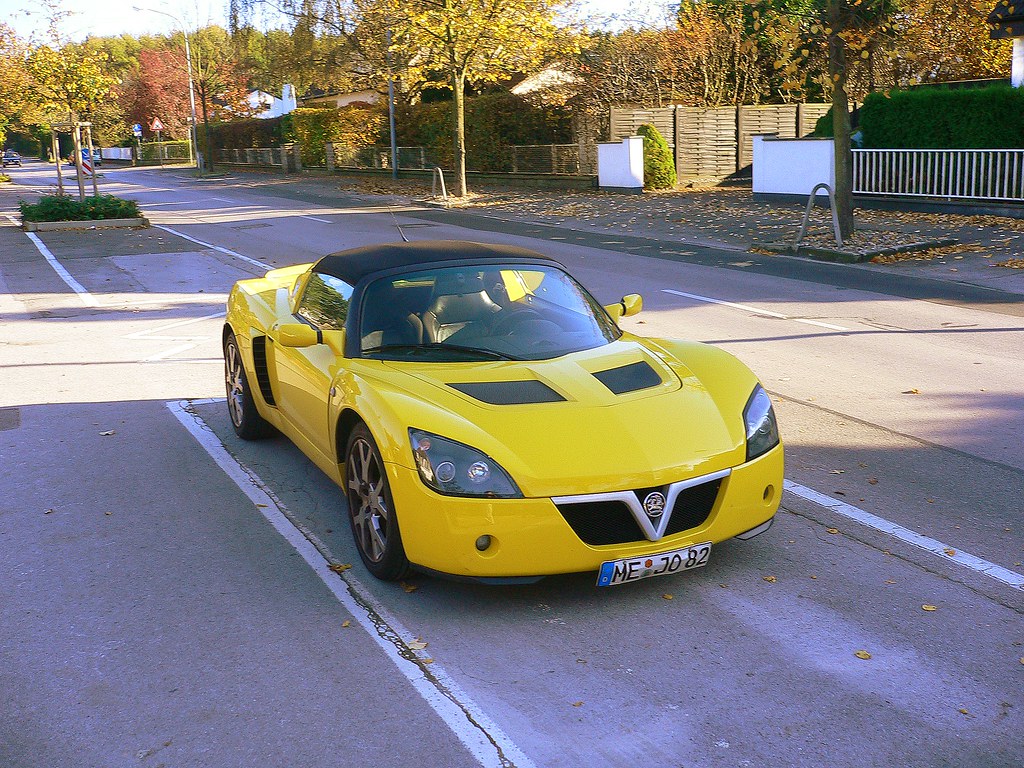
6. **The Millennial Shift: Economic Realities and Changing Priorities**A significant factor contributing to the shrinking sports car market is a notable generational shift in buying habits, particularly among younger consumers. Critics observe a “disheartening trend” where “The next generation of buyers isn’t purchasing sports cars,” indicating a potential long-term threat to the segment. This departure from previous generations’ enthusiasm for two-seaters suggests that “younger car buyers aren’t touching sports cars as much as their grandparents and parents did,” hinting at deeper societal and economic undercurrents that are reshaping the automotive landscape.
This shift isn’t merely a change in taste; it’s often rooted in harsh economic realities. As Forbes points out, millennials are not rushing to buy expensive houses; instead, “most are renting at exorbitant rates.” Their modest paychecks are frequently burdened by “unprecedented college loan debt,” leaving little disposable income for discretionary purchases like sports cars. The priority, for many, is simply “sustaining a basic, penny-pinching living as they start out in the world,” which naturally leads them to more practical and affordable transportation options.
Consequently, many young buyers are “still driving hand-me-down rides or buying more affordable, used, and practical models.” Road & Track further substantiates this by highlighting that “wage growth has practically stalled over the past 40 years,” while expenses continue to escalate. This economic squeeze means that while the dream of sports car ownership may still exist, the financial capacity to realize it is increasingly out of reach for a significant portion of the younger demographic. The market is not just shrinking due to practicality, but due to a generation facing vastly different financial challenges.
Read more about: The Generational Shift: 12 Boomer Classic Cars Millennials Are Passing On, and the Data Behind Their Disinterest

7. **The Affordability Crisis: Income Inequality and the Dream Deferred**The core of the declining sports car market, particularly among younger generations, boils down to a stark “affordability and income inequality issue.” Historical data from Road & Track vividly illustrates this widening gap. In 1990, a young man’s average annual income was $21,393, allowing a new Mazda Miata at $14,000 to be a relatively accessible aspiration. Fast-forward to 2019, and while the average young man’s income rose to $42,212, the Miata’s base model retailed for $26,500. Crucially, the housing market had “skyrocketed, with numbers averaging 7.6 times the younger man’s wages,” dramatically altering the financial landscape.
This disproportionate growth in living costs, relative to stagnant wage growth, makes luxury purchases like sports cars increasingly challenging. The situation is further complicated by income inequality, as evidenced by data showing that young women in both 1990 and 2019 earned significantly less than their male counterparts. These economic pressures mean that “expenses are growing while incomes are shrinking,” pushing sports car ownership out of reach for many who would otherwise be inclined to purchase them.
Reddit threads provide a glimpse into the ground-level reality, with comments frequently pointing out that it’s simply “a matter of not being able to afford sports cars.” The combined burdens of increased housing costs, escalating insurance premiums, and substantial loan debts consume the marginal incomes of younger generations, leaving little room for a “fun, typically more expensive sports car.” This pervasive “inequality issue for some and an affordability problem for others” translates into a “potential disappearance of the sports car-buying public in general,” a trend that could ultimately “affect the industry’s production of fun and flashy cars” and lead to a “sad world” if the sports car becomes extinct.
Navigating the complexities of a changing automotive landscape, the sports car segment, far from fading into obscurity, is actively reinventing itself. While the challenges of practicality and affordability remain potent, a closer look reveals dynamic shifts in how these vehicles are valued, manufactured, and powered. The future of the sports car isn’t just about preserving tradition; it’s about embracing innovation and redefining what performance means for a new era of enthusiasts and collectors.
Car Model Information: 2019 Mazda MX-5 Miata RF Grand Touring
Name: Mazda MX-5
Manufacturer: Mazda
Aka: unbulleted indent list
Production: 1989–present
Assembly: Hiroshima
Class: Roadster (car),sports car
Layout: unbulleted indent list
Platform: List of Mazda model codes#Model codes
Categories: 1990s cars, 2000s cars, 2010s cars, 2020s cars, All Wikipedia articles in need of updating
Summary: The Mazda MX-5 is a lightweight two-seat sports car manufactured and marketed by Mazda. In Japan, it is marketed as the Mazda Roadster or, previously, as the Eunos Roadster. In the United States it is sold as the Mazda Miata (), and it was formerly marketed under the same name in Canada. The name miata derives from Old High German for “reward”.
Produced at Mazda’s Hiroshima plant, the MX-5 debuted in 1989 at the Chicago Auto Show. It was created under the design credo Jinba ittai, meaning “unity of horse and rider”. Noted for its small, light, balanced and minimalist design, the MX-5 has often been described as a successor to the 1950s and 1960s Italian and British roadsters, with the Lotus Elan serving as a design benchmark.
Each generation is identified by a two-letter code, beginning with the first generation NA. The second generation NB launched in 1998, followed by the third generation NC in 2005, and the fourth generation ND in 2015.
More than one million MX-5s have been sold, making it the best-selling two-seat convertible sports car in history.
Get more information about: Mazda MX-5
Buying a high-performing used car >>>
Brand: Mazda Model: Miata
Price: $24,981 Mileage: 48,370 mi.

8. **The Booming Collectible Market: A New Frontier for Sports Car Value**In stark contrast to the depreciating assets many cars become, high-end sports cars are carving out a formidable niche in the collectible market, defying traditional economic cycles. The era when an enthusiast of modest means could acquire a truly special car for pennies on the dollar, a la Henry N. Manney III buying a Ferrari 250 GTO for less than a third of its original cost in the late 1960s, is largely over. Today, that same GTO could be worth upwards of $60 million, a testament to a dramatic paradigm shift.
John Wiley, manager of valuation analytics for Hagerty, the classic-car insurer, points out that around the mid-2010s, the depreciation paradigm for high-end sports cars fundamentally shifted. Where models like the 2005 Ford GT or Porsche Carrera GT experienced modest depreciation, the subsequent generation, including the McLaren P1 and Porsche 918 Spyder, have appreciated within five years. This accelerated appreciation extends to more accessible, yet still aspirational, models as well.
Consider the journey of Art Mason’s 1982 Ferrari 308 GTSi, purchased for $35,500 in 2008—just over half its new price. Today, that same 308 might fetch $100,000. Similarly, Neil Gellman acquired a 2001 Porsche 911 Turbo for $36,000, well under its six-figure new price, only to see its value now approach its original sticker price. Even the Lamborghini Gallardo, once bottoming out around $80,000, now sees early vintages priced over $100,000, with rare manual versions exceeding $200,000.
This remarkable change signifies that depreciation curves have become far shallower, with appreciation occurring much sooner. A key driver appears to be the impending end of the pure internal combustion era, making these vehicles “quite special in the future,” as Wiley suggests. The scarcity of manual transmissions, too, adds a premium, signaling a market that values heritage and mechanical purity more than ever.
Car Model Information: 2019 Volvo XC90 T6 Inscription
Name: Ferrari 250 GTO
Caption: 1963 Ferrari 250 GTO (chassis 4153GT)
Manufacturer: Ferrari
Production: 1962–1964,(36 produced)
Designer: Giotto Bizzarrini,Scaglietti
Class: Sports car
BodyStyle: berlinetta
Related: Ferrari 330#330 LMB,Ferrari P#250 LM
Layout: FR layout
Engine: 2,953 cc,Ferrari Colombo engine#250,Overhead camshaft#Single Overhead camshatf,Weber carburetor,Compression ratio
Powerout: 300 PS
Abbr: on
Order: flip @ 5500 rpm
Transmission: Manual transmission
Wheelbase: 2400 mm
Length: 4325 mm
Width: 1600 mm
Height: 1210 mm
Weight: convert
Predecessor: Ferrari 250 GT SWB
Successor: Ferrari 250 LM,Ferrari 288 GTO
Categories: All articles lacking reliable references, All articles needing additional references, All articles with bare URLs for citations, All articles with unsourced statements, Articles lacking reliable references from March 2022
Summary: The Ferrari 250 GTO is a grand tourer produced by Ferrari from 1962 to 1964 for homologation into the FIA’s Group 3 Grand Touring Car category. It was powered by Ferrari’s Tipo 168/62 Colombo V12 engine. The “250” in its name denotes the displacement in cubic centimeters of each of its cylinders; “GTO” stands for Gran Turismo Omologato, Italian for “Grand Touring Homologated”.
Just 36 of the 250 GTOs were manufactured between 1962 and 1964. This includes 33 cars with 1962–63 bodywork (Series I) and three with 1964 (Series II) bodywork similar to the Ferrari 250 LM. Four of the older 1962–1963 (Series I) cars were updated in 1964 with Series II bodies.
When new, the 250 GTO cost $18,000 in the United States, with buyers personally approved by Enzo Ferrari and his dealer for North America, Luigi Chinetti. This model has since become highly desired by automobile collectors and sales have repeatedly set price records. The current record for world’s most expensive Ferrari was set in June 2018 when a 1963 250 GTO (chassis 4153GT) was sold in a private sale for $70 million.
In 2004, Sports Car International placed the 250 GTO eighth on their list of Top Sports Cars of the 1960s, and nominated it the top sports car of all time. Similarly, Motor Trend Classic placed the 250 GTO first on a list of the “Greatest Ferraris of All Time”. Popular Mechanics named it the “Hottest Car of All Time”.
Get more information about: Ferrari 250 GTO
Buying a high-performing used car >>>
Brand: Ferrari Model: 250 GTO
Price: $28,859 Mileage: 43,261 mi.

9. **The Influence of High-End Niche Manufacturers: Crafting Exclusivity and Art**Beyond the mainstream brands, a cadre of high-end niche manufacturers plays a crucial role in maintaining the mystique and desirability of sports cars, even if their products remain financially out of reach for most. Singer Vehicle Design, based in California, exemplifies this, with a significant backlog of orders for their reimagined Porsche 911s. These meticulously restored vehicles, ranging from hundreds of thousands to over a million dollars, are not merely cars but bespoke works of art, appealing to a clientele that values unparalleled craftsmanship and exclusivity.
Rob Dickinson, CEO of Singer Vehicle Design, attributes this demand to the “deep and enduring affection that so many people have for the Porsche 911 and its heritage across seven decades on road and track.” Singer’s commitment to “make sure that our cars are machines that delight its owners” underscores an emotional connection that transcends raw performance metrics. This focus on “delight” and “great design” ensures their relevance and appeal, showcasing the pinnacle of automotive artistry.
While these brands, including ProDrive, certainly burnish the overall image of the sports car market, they are not a substitute for the “affordable, approachable sports car that us mortals can buy,” as Dave Undercoffler, editor-in-chief of Autolist, aptly points out. Their eye-watering price tags mean they operate in a different sphere, similar to the high-end classic car market. Nevertheless, they serve as aspirational beacons, fueling enthusiasm and reminding the automotive world of the beauty and passion inherent in the sports car concept.
Car Model Information: 2024 Porsche 911
Name: Porsche 911
Caption: The 1 millionth 911 produced on display at Volkswagen Group Forum, Berlin
Designer: Ferdinand Alexander Porsche
Manufacturer: Porsche
Production: September 1964 – present
Assembly: Stuttgart,Baden-Württemberg
Class: Sports car
BodyStyle: unbulleted list
Related: unbulleted list
Layout: Rear-engine design,rear-wheel drive
Predecessor: Porsche 356
Categories: 1970s cars, 1980s cars, 1990s cars, 2+2 coupés, 2000s cars
Summary: The Porsche 911 model series (pronounced Nine Eleven or in German: Neunelf) is a family of German two-door, high performance rear-engine sports cars, introduced in September 1964 by Porsche AG of Stuttgart, Germany, and now in its eighth generation. All 911s have a rear-mounted flat-six engine, and usually 2+2 seating, except for special 2-seater variants. Originally, 911s had air-cooled engines, and torsion bar suspension, but the 911 has been continuously enhanced, and evolved across generations. Though the 911 core concept has remained largely unchanged, water-cooled engines were introduced with the 996 series in 1998, and front and rear suspension have been replaced by Porsche-specific MacPherson suspension up front, and independent multi-link rear suspension.
The 911 has been raced extensively by private and factory teams, in a variety of classes. It is among the most successful competition cars. In the mid-1970s, the naturally aspirated 911 Carrera RSR won world championship races including Targa Florio and the 24 Hours of Daytona. The 911-derived 935 turbo also won the 24 Hours of Le Mans in 1979. Porsche won the World Championship for Makes in 1976, 1977, 1978, and 1979 with 911-derived models.
In a 1999 poll to determine the Car of the Century, the 911 ranked fifth — one of two in the top five that had remained continuously in production (the original Beetle remained in production until 2003). The one millionth example was manufactured in May 2017 and is in the company’s permanent collection.
Get more information about: Porsche 911
Buying a high-performing used car >>>
Brand: Porsche Model: 911
Price: $239,888 Mileage: 6,944 mi.

10. **Collaborative Development Strategies: Sharing the Burden of Innovation**In an automotive landscape where the business case for building low-volume sports cars becomes increasingly challenging, collaborative development has emerged as a crucial strategy for automakers. The significant investment required for “hard tooling” to produce a new car, particularly in shrinking segments like roadsters and coupes, often makes independent development economically prohibitive. This reality has led many manufacturers to forgo these exercises altogether, resulting in a decline in new, affordable sports car options.
However, strategic partnerships offer a viable path forward. The co-development of the Toyota GR86 and Subaru BRZ is a prime example of this mutually beneficial arrangement. As Todd Hill, Product PR manager for Subaru, explains, “As the market for sports cars has declined over the past several years, the sales volumes required to support new-from-the-ground-up sports car development have grown ever more challenging. This makes partnering up a logical and mutually beneficial arrangement.”
This collaboration has proven successful, allowing both marques to launch second generations of their shared sports car platform. Hill notes that “the combination of Subaru’s and Toyota’s strengths resulted in a better sports car than either could have developed independently.” The first generation of the BRZ, for instance, “exceeded our sales expectations and brought in many young enthusiasts who were passionate.” Such partnerships ensure that desirable sports cars, like the GR86, BRZ, and even the manual transmission Toyota Supra, continue to reach the market, catering to a passionate customer base that Toyota vows to keep growing.
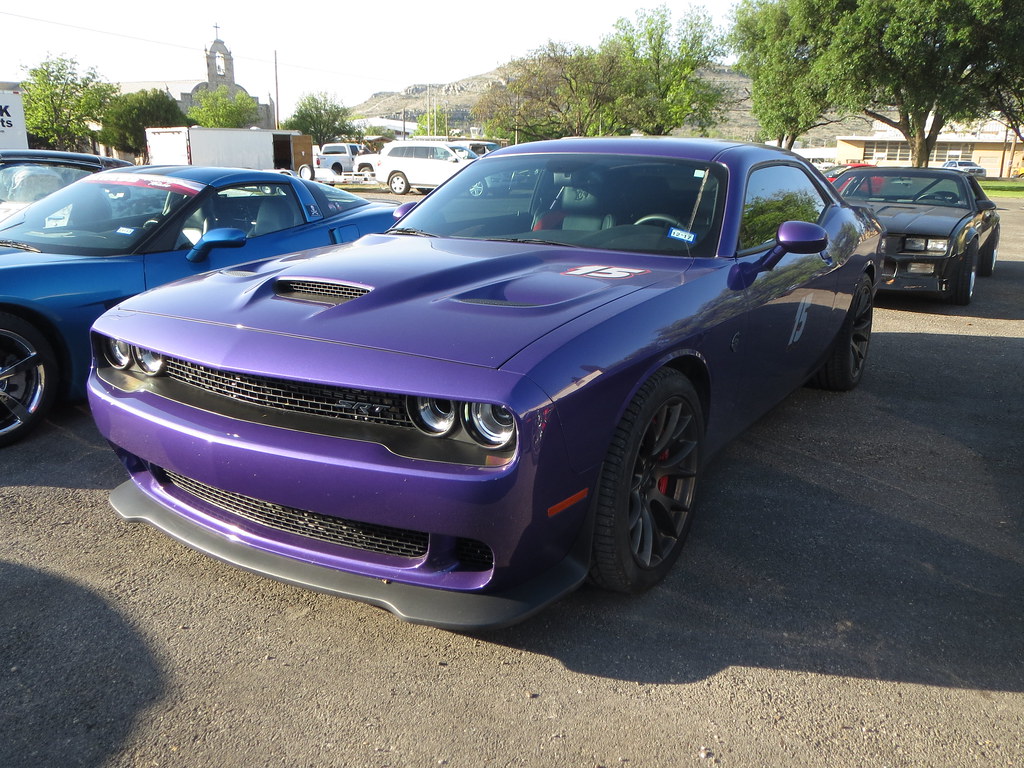
11. **The March of Electric Powertrains: Redefining Sports Car Performance**The advent of electric vehicles (EVs) is fundamentally reshaping the definition and experience of a sports car, introducing both exciting possibilities and significant challenges. Electric motors deliver all their torque instantaneously, translating into supercar-like acceleration that was once the exclusive domain of only the most powerful internal combustion engines. This immediate thrust, combined with a lower center of gravity inherent in EV design, enhances handling performance, promising a new era of dynamic capabilities.
Manufacturers are rapidly embracing this shift. Dodge, for instance, confirmed the sunsetting of its V8-powered Charger Hellcat and Challenger Hellcat, replacing them with the battery-electric Charger SRT Daytona. This move signals a broader industry trend toward electrified performance. Dave Undercoffler notes that “the performance characteristics of an electric powertrain are perfect for sports cars,” even recalling the original Tesla Roadster as one of the most fun cars he’s ever driven.
However, this paradigm shift is not without its complexities. Tony Quiroga of Car and Driver highlights that “the performance space moved into electric cars,” yet questions how true “theater and passion” can be replicated in a world of quiet, smooth, and odorless electric vehicles. Rob Dickinson of Singer Vehicle Design acknowledges that “it’s becoming harder to differentiate through performance with EVs because enormous power is so readily available.” He suggests that “beauty, jewel-like execution and desirability will play important roles” in shaping the future of the EV sports car, emphasizing the emotional connection over sheer power figures.

12. **Advanced Manufacturing Techniques: Revolutionizing Production for Niche Models**The once seemingly insurmountable hurdle of high production costs for low-volume vehicles is being significantly lowered by breakthroughs in advanced manufacturing. “Additive manufacturing,” commonly known as 3D printing, is reaching a critical “tipping point” in the automotive industry. Brennon White, a technical specialist for Advanced Manufacturing at General Motors, recalls that metal additive parts were once small, expensive, and fragile in 2011. However, everything has since changed dramatically.
Today, GM is actively integrating 3D-printed metal and plastic parts into production vehicles, from the Cadillac Blackwing sports sedans, where they add visual detail and resolve manufacturing complexities, to the ultra-luxury Cadillac Celestiq. The Celestiq, with over 150 3D-printed parts, some as large as a shoebox, is pushing manufacturing volumes and embracing this technology at an unprecedented scale for a major OEM.
This widespread adoption signifies a shift where the opportunity now extends to “not just hundreds, but thousands of units,” according to White. The biggest remaining challenge is not the material science, but increasing overall volume to further reduce costs, accelerating its rise to mainstream status. This evolution implies that hard tooling, traditionally a massive investment, will one day be a much smaller part of the production picture, making smaller batches of specialized vehicles far more justifiable.
13. **Laser-Cut and Brake-Bent Parts: Agile Solutions for Automotive Fabrication**Beyond the widely discussed advancements in additive manufacturing, other sophisticated techniques for processing raw sheet metal and tubes are also rapidly evolving, democratizing access to custom fabrication. Technologies like laser-cutting and brake-bending, once requiring substantial upfront investment, can now produce complex parts with minimal or no “hard tooling,” offering unprecedented agility and cost-effectiveness.
Utah-based Oshcut stands out as a prime example of this innovation. The company, founded by Caleb Chamberlain in 2018, offers an online software suite that can instantly unfold complex part designs, understand their geometry with fractions of a millimeter precision, and immediately provide a price. This streamlined process eliminates the need for emails, minimum order quantities, and offers additional services like tapping, deburring, and powder-coating, all within a user-friendly web interface.
Chamberlain notes that Oshcut serves “so many different industries,” and sees immense potential in automotive manufacturing, particularly for tubing. This accessibility empowers hobbyists, tinkerers, and aftermarket accessory companies to create custom metal parts with ease. Such advances mean that developing custom metal components will only become easier and more affordable, further widening the possibilities for low-volume and bespoke vehicle projects, from restoration to entirely new designs.
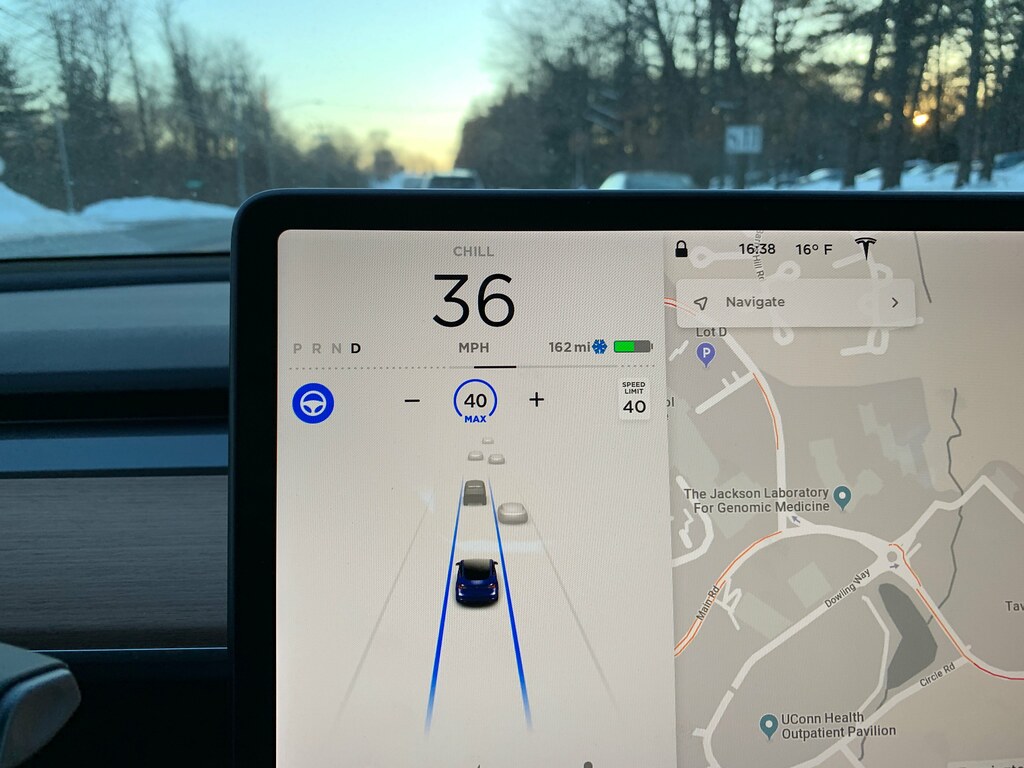
14. **Integrated Digital Systems and Machine Learning: The Future of Car Development**The ultimate revolution in sports car development lies not just in individual manufacturing techniques but in the intelligent integration of digital systems and machine learning. Kevin Czinger, founder of Czinger Vehicles and Divergent, views this holistic approach as the key to transforming manufacturing paradigms. He argues that “any of these technologies are of relatively little use when you use them in isolation,” emphasizing the need for a common platform that maximizes the productivity of talented engineers.
Czinger’s vision aims to counter the industrial decline seen in regions like the “rust belt” by creating a flexible alternative to rigid manufacturing methods. Divergent leverages immense computing power, enabling machine learning to dramatically accelerate the parts development process. What once took engineering teams months to accomplish can now be achieved by individuals in less than a day, a profound leap in efficiency.
With in-house testing and simulation capabilities, Czinger’s approach promises to lower the cost of developing entirely new vehicle platforms. This systemic shift means that niche parts of the automotive landscape, such as roadsters and coupes, will no longer be an afterthought but a genuine opportunity. It’s a future where innovation, driven by computational power and integrated manufacturing, ensures that the passion for specialized, high-performance vehicles can continue to thrive, adapting to evolving demands and technological capabilities.
The sports car, despite facing unprecedented challenges from shifting consumer preferences and economic pressures, is far from extinct. Instead, it is undergoing a profound metamorphosis, embracing new technologies and market realities to redefine its place in the automotive world. From the robust collectible market that celebrates its heritage, to the cutting-edge manufacturing techniques that promise a more agile future, and the electric powertrains that reshape its performance, the sports car continues to evolve. The enduring passion for driving, for the theater and magic of a finely tuned machine, ensures that these vehicles will continue to captivate hearts and minds, proving Ferry Porsche’s famous adage that “The last car built on Earth will surely be a sports car.”

